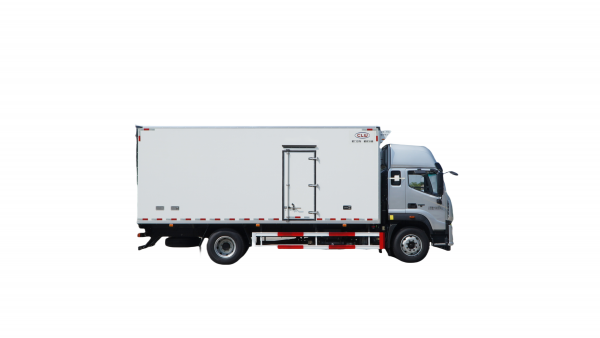Introduction
Truck mounted cranes have become indispensable assets in various industries, providing efficient and versatile lifting solutions. These cranes are equipped with sophisticated hydraulic systems that enable them to lift heavy loads with ease and precision. In this comprehensive guide, we delve into the intricacies of truck mounted crane hydraulic systems, exploring their components, functions, maintenance, and benefits.
Overview of Truck Mounted Crane Hydraulic Systems
Truck mounted crane hydraulic systems are designed to convert mechanical energy into hydraulic energy, allowing for the controlled movement of the crane's boom, jib, and winch. These systems consist of a range of components that work together to provide the necessary power and control for lifting operations.
Key Components of a Truck Mounted Crane Hydraulic System
1. Hydraulic Pump: The hydraulic pump is the heart of the hydraulic system, responsible for generating the necessary hydraulic pressure to operate the crane's functions. There are various types of hydraulic pumps used in truck mounted cranes, including gear pumps, piston pumps, and vane pumps.
2. Hydraulic Fluid: Hydraulic fluid is essential for the proper functioning of the hydraulic system, serving as a medium for transmitting power and lubricating the system's components. The type and quality of hydraulic fluid used in a truck mounted crane play a crucial role in maintaining the system's performance and longevity.
3. Hydraulic Cylinders: Hydraulic cylinders are used to convert hydraulic energy into linear motion, allowing for the extension and retraction of the crane's boom and other components. Ambulance healthcare technology are equipped with seals and pistons to ensure smooth and reliable operation.
4. Control Valves: Control valves regulate the flow and direction of hydraulic fluid within the system, enabling precise control over the crane's movements. These valves are operated manually or electronically, depending on the crane's design and application.
5. Hydraulic Hoses and Fittings: Hydraulic hoses and fittings are used to connect the various components of the hydraulic system, allowing for the seamless transmission of hydraulic fluid throughout the system. Proper maintenance of hoses and fittings is essential to prevent leaks and ensure the system's efficiency.
6. Hydraulic Reservoir: The hydraulic reservoir stores the hydraulic fluid and helps to dissipate heat generated during operation. Maintaining the proper fluid level and quality in the reservoir is crucial for the overall performance of the hydraulic system.
Functions of a Truck Mounted Crane Hydraulic System
The hydraulic system of a truck mounted crane performs a variety of functions essential for lifting and moving heavy loads. Some of the key functions include:
1. Lifting and Lowering: The hydraulic system enables the crane to lift and lower heavy loads with precision and control. By adjusting the flow of hydraulic fluid to the cylinders, the crane operator can raise or lower the boom and jib as needed.
2. Extension and Retraction: Hydraulic cylinders extend and retract to adjust the reach of the crane's boom and jib, allowing for versatile positioning of the load. This feature is crucial for reaching objects at varying heights and distances.
3. Slewing: The hydraulic system enables the crane to rotate or slew, providing 360-degree coverage for lifting operations. By controlling the flow of hydraulic fluid to the slewing mechanism, the operator can swivel the crane to the desired position.
4. Load Holding: Hydraulic systems in truck mounted cranes are designed to hold loads securely in place, even when the crane is not in operation. This feature ensures the safety of the operator and surrounding personnel during lifting operations.
Maintenance of Truck Mounted Crane Hydraulic Systems
Proper maintenance of the hydraulic system is essential to ensure the reliable performance and longevity of a truck mounted crane. Here are some key maintenance practices to follow:
1. Regular Inspections: Perform regular inspections of the hydraulic system, checking for leaks, damaged hoses, and worn components. Address any issues promptly to prevent further damage and ensure the system's efficiency.
2. Fluid Checks: Monitor the hydraulic fluid level and quality regularly, topping up or replacing the fluid as needed. Contaminated or degraded hydraulic fluid can cause damage to the system's components and affect performance.
3. Filter Replacements: Replace hydraulic filters at recommended intervals to prevent contaminants from entering the system and causing damage. Clean filters help maintain the efficiency of the hydraulic system and prolong its lifespan.
4. Lubrication: Proper lubrication of moving parts, such as cylinders and valves, is crucial for reducing friction and wear. Use the recommended lubricants and follow the manufacturer's guidelines for lubrication intervals.
5. Component Alignment: Ensure proper alignment of hydraulic components to prevent excessive wear and strain on the system. Misaligned components can lead to inefficiencies and premature failure of the hydraulic system.
Benefits of Truck Mounted Crane Hydraulic Systems

Truck mounted crane hydraulic systems offer a range of benefits that make them indispensable in various industries. Some of the key benefits include:
1. Versatility: Truck mounted cranes equipped with hydraulic systems are versatile lifting solutions that can be used in diverse applications, from construction and infrastructure projects to forestry and utility maintenance.
2. Precision Control: Hydraulic systems provide precise control over the crane's movements, allowing for accurate positioning and lifting of heavy loads. This level of control enhances safety and efficiency during lifting operations.
3. Efficiency: Hydraulic systems are highly efficient in converting energy into motion, enabling the crane to lift heavy loads with minimal effort. This efficiency helps reduce fuel consumption and operating costs associated with crane operations.
4. Safety: The precise control and load-holding capabilities of hydraulic systems enhance the safety of lifting operations, reducing the risk of accidents and injuries. Proper maintenance of the hydraulic system further ensures safe and reliable crane performance.
Conclusion
Truck mounted crane hydraulic systems are sophisticated engineering marvels that play a crucial role in modern lifting operations. Understanding the components, functions, maintenance, and benefits of these hydraulic systems is essential for ensuring the reliable performance of truck mounted cranes. By following recommended maintenance practices and leveraging the capabilities of hydraulic systems, operators can maximize the efficiency and safety of lifting operations in various industries.
